What is Ansible – Advantages and Disadvantages
What is Ansible?
Ansible is an automated system which made for you it needs it is a system. It has all capability to handle IT functions it is all in one. The biggest ansible advantages is the designed for multi-tier deployments since starting. Ansible handle IT infrastructure by describing all of your systems interrelate, rather than just managing one system at a time.
It uses no agents and no additional custom security infrastructure. It’s easy to deploy – and most importantly, it uses a very simple language (YAML).
Initial release: February 20, 2012
Stable release: 2.16.3 / January, 29 2024
Ansible Advantages
Ansible is an open-source automation tool, offers several advantages:
1. Agentless
An agentless architecture is one of top Ansible advantages. It refers to the absence of software agents that need to be installed and running on remote systems or nodes. Instead of relying on agents, Ansible communicates with remote systems using standard network protocols such as SSH for Unix/Linux systems or WinRM for Windows systems.
In an agent-based automation tool, a software agent typically runs on each managed node, facilitating communication and executing commands or scripts sent by a central controller.
However, in an agentless model like Ansible’s, the control machine (where Ansible is installed and configured) remotely manages the target systems without requiring any additional software components on the managed nodes.
2. Simplicity
Using YAML syntax has one of key ansible advantages, which is human-readable and easy to understand. Its simple architecture and intuitive language make it accessible even to those without extensive programming knowledge.
What are Ansible Advantages and Disadvantages in DevOps? Click To Tweet3. Flexibility
Ansible is known for its flexibility, which refers to its ability to adapt to various environments, systems, and use cases. Here are some key ansible advantages aspects:
- The main Ansible advantages is that it can manage a diverse range of systems and platforms, including Unix/Linux, Windows, network devices, cloud services (AWS, Azure, GCP), containers (Docker, Kubernetes), and more. This broad support allows users to automate tasks across heterogeneous environments using a single tool.
- Ansible’s modular design facilitates extensibility and customization. It provides a wide range of built-in modules for performing tasks such as package management, file manipulation, user management, and more. Additionally, users can develop custom modules to extend Ansible’s functionality to suit specific requirements.
- Ansible promotes role-based organization of tasks and configurations through roles. Roles encapsulate reusable sets of tasks, handlers, templates, and variables, allowing users to modularize and share common configurations across projects and environments. This promotes code reusability and maintainability.
- Ansible supports dynamic inventory, allowing users to generate inventory files dynamically based on external sources such as cloud providers, virtualization platforms, and external databases. This enables dynamic management of infrastructure without the need to maintain static inventory files manually.
4. Idempotency
Ansible ensures that the system configuration remains consistent, regardless of the number of times a playbook is applied. This idempotent nature means you can repeatedly apply configurations without causing unintended side effects.
5. Scalability
Ansible can scale from managing a handful of nodes to thousands of them with ease. Its push-based model allows simultaneous configuration of multiple machines, making it suitable for large-scale deployments.
6. Community and Ecosystem
Ansible benefits from a vibrant community that contributes modules, playbooks, and plugins. The extensive ecosystem provides pre-built solutions for various use cases, saving time and effort in development.
7. Integration
Ansible integrates seamlessly with other tools and platforms, including version control systems (e.g., Git), CI/CD pipelines, monitoring solutions, and configuration management databases (CMDBs). This integration enables end-to-end automation workflows.
8. Declarative Nature
Ansible playbooks describe the desired state of a system rather than the steps to achieve it. This declarative approach simplifies configuration management and promotes better understanding and collaboration among teams.
9. Security
Ansible emphasizes security best practices, such as using SSH encryption for communication and providing options for credential management, including vaults for sensitive data.
Ansible provides modules and playbooks for automating security-related tasks, such as system hardening, compliance checks, vulnerability scanning, and patch management. By automating these tasks, organizations can ensure that security measures are consistently applied across their infrastructure and systems, reducing the risk of misconfiguration and vulnerabilities.
10. Cost-Effective
Being open-source, Ansible eliminates licensing costs associated with proprietary automation tools. It also reduces operational expenses by streamlining repetitive tasks and improving efficiency. This is one of the core ansible advantages for it’s popularity.
Ansible Disadvantages
While Ansible offers many advantages, it’s important to consider potential disadvantages or limitations:
1. Learning Curve
Although Ansible’s YAML syntax is relatively straightforward, mastering advanced features and best practices may require some learning. Understanding concepts such as Jinja templating, roles, and playbooks’ intricacies might take time for beginners.
2. Statelessness
Ansible doesn’t inherently track the state of managed systems beyond the execution of tasks. This can be a disadvantage for scenarios requiring detailed state tracking and management, which are better addressed by tools like Terraform.
3. Scalability
Ansible is designed to scale, managing very large infrastructures with thousands of nodes can become challenging. The lack of built-in state tracking and the inherent overhead of SSH connections might lead to performance issues in large-scale deployments.
4. Limited Parallelism
Ansible allows parallel execution of tasks, it may not fully leverage the available resources on very large infrastructures. This limitation can impact performance in scenarios where rapid execution is critical.
5. Complexity of Tasks
Ansible simplifies automation, complex tasks might require writing intricate playbooks or using external tools and scripts. Managing such complexity can become challenging, especially for users with limited programming experience.
6. Limited Windows Support
While Ansible can manage Windows systems, its support is not as extensive as for Unix/Linux environments. Some tasks or modules may have limited functionality or compatibility with Windows, which could pose challenges in heterogeneous environments.
7. Dependencies on External Tools
Ansible relies on external tools for certain tasks, such as version control systems (e.g., Git) for managing playbooks and SSH for communication with managed nodes. Dependency management and integration with these external tools can introduce additional complexity.
8. Community Modules Quality
While Ansible’s community provides a vast array of modules, the quality and reliability of these modules can vary. Users might encounter issues with community-contributed modules, necessitating careful evaluation and testing before production use.
9. Performance Overhead
Ansible’s agentless architecture relies on SSH connections for communication, which can introduce overhead, especially in environments with strict security policies or high-latency networks.
10. Enterprise Features
While Ansible Tower (or AWX, the open-source upstream project) provides enterprise features such as RBAC, job scheduling, and GUI-based management, these features come with additional costs or setup complexities.
Despite these disadvantages, Ansible remains a advanced, powerful and widely adopted automation tool, especially for configuration management, application deployment, and infrastructure automation tasks. Understanding these limitations can help organizations make informed decisions when selecting automation tools and designing their workflows.
What are the disadvantages of Ansible Tower? Click To TweetAnsible vs Terraform
Ansible and Terraform are both popular infrastructure automation tools, but they serve different purposes and have distinct characteristics. Here’s a comparison between Ansible and Terraform:
Why Ansible is better than Terraform? Click To Tweet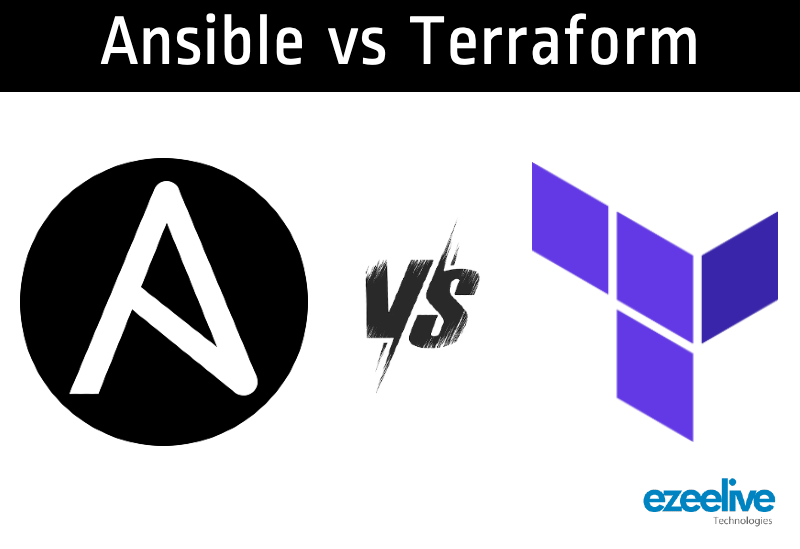
Ansible | Terraform | |
|---|---|---|
Purpose | Ansible is primarily a configuration management and automation tool. It focuses on ensuring the desired state of systems by automating tasks such as software installation, configuration file management, service management, and application deployment. | Terraform is an infrastructure as code (IaC) tool designed for provisioning and managing infrastructure resources.
It enables users to define infrastructure configurations declarative using a high-level configuration language. |
Language | Ansible uses YAML syntax for defining tasks and playbooks. YAML is human-readable and easy to understand, making Ansible accessible to users. | Terraform uses HashiCorp Configuration Language (HCL) or JSON syntax for defining infrastructure configurations.
HCL is specifically designed for defining infrastructure as code and includes features such as variables, expressions, and modules. |
Agentless | Ansible operates in an agentless mode, meaning it does not require any software agents to be installed on managed nodes.
Instead, it communicates with managed nodes over SSH or WinRM. | Terraform supports a wide range of cloud providers, infrastructure platforms, and services through provider plugins.
This enables users to provision resources across heterogeneous environments using a single configuration language and tool. |
State Management | Ansible does not maintain state information about infrastructure. Each task in Ansible playbooks is idempotent, meaning it can be run multiple times without causing unintended side effects.
However, Ansible itself does not track or manage the state of infrastructure resources. | Terraform maintains a state file that tracks the current state of infrastructure resources managed by Terraform.
This state file is used to plan and apply changes to infrastructure, ensuring that Terraform can track and manage the lifecycle of resources. |
Extensibility | Ansible’s modular architecture allows users to extend its functionality by developing custom modules and plugins.
This enables integration with external tools, APIs, and services to automate a wide range of tasks. | Terraform generates an execution plan before applying changes to infrastructure. This plan provides a preview of the actions.
Terraform will take to create, modify, or delete resources, allowing users to review and validate changes before applying them. |
Ansible vs Jenkins
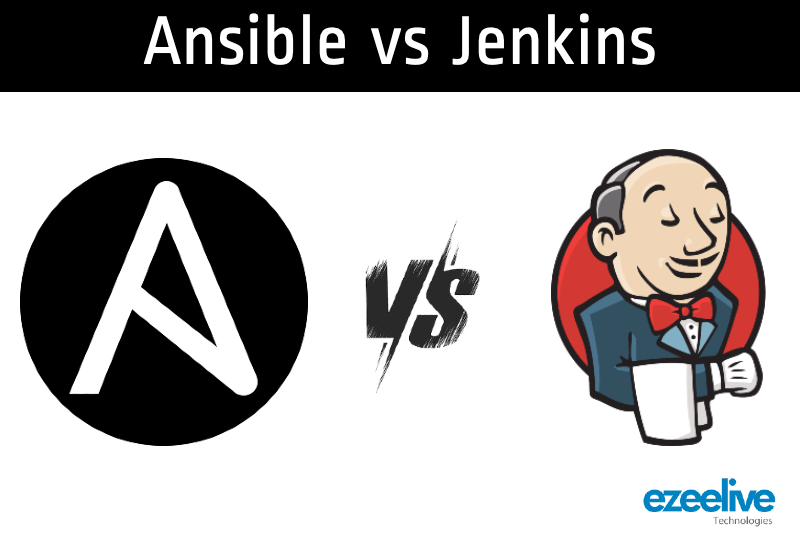
Ansible | Jenkins | |
|---|---|---|
Purpose | Ansible is a configuration management and automation tool.
It’s designed to automate the provisioning, configuration, and deployment of software and infrastructure. | Jenkins is an automation server primarily used for continuous integration (CI) and continuous delivery (CD). It automates the build, test, and deployment phases of software development. |
How it works | Ansible uses YAML-based playbooks to describe automation tasks. | Jenkins runs jobs or pipelines defined by users. Jobs can be triggered by events such as code commits or scheduled intervals.
Jenkins provides a web-based interface for managing jobs and viewing build status. |
Key features | Agentless: Ansible communicates with remote machines over SSH, so no agent installation is required on the managed nodes.
Idempotent: Tasks can be run multiple times without causing unintended side effects, ensuring consistency.
Extensible: Ansible has a large ecosystem of modules and plugins that extend its functionality. | Extensive plugin ecosystem: Jenkins has a vast array of plugins available to integrate with various tools and technologies.
Distributed builds: Jenkins can distribute build tasks across multiple nodes, allowing for scalability and parallelism.
Pipeline as code: Jenkins Pipeline allows defining build processes in code, enabling version control and code review for CI/CD workflows. |
- Ansible focuses on infrastructure automation and configuration management, while Jenkins specializes in CI/CD.
- Ansible can be used to provision infrastructure and deploy applications, while Jenkins can be used to automate the build and test processes for those applications.
- Jenkins has more integrations with CI/CD-related tools and services, while Ansible’s integrations are more focused on infrastructure management and cloud platforms.
Ansible vs Puppet vs Chef vs SaltStack
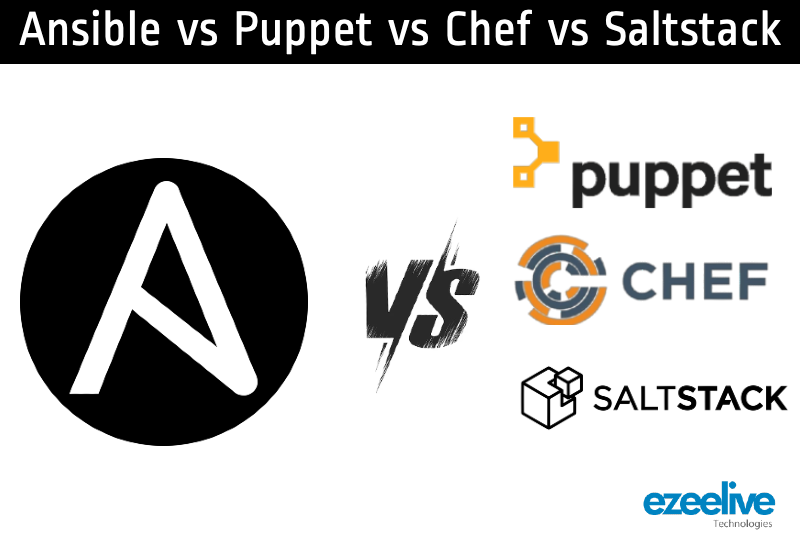
Ansible | Puppet | Chef | SaltStack | |
|---|---|---|---|---|
Architecture | Ansible follows a push-based architecture, where the control node pushes configurations and tasks to the managed nodes using SSH.
It doesn’t require a separate agent to be installed on managed nodes. | Puppet follows a pull-based architecture, where the managed nodes pull configurations from a central Puppet master server.
Puppet requires an agent (Puppet agent) to be installed on managed nodes to communicate with the master. | Chef follows a pull-based architecture, where the managed nodes periodically pull configurations from a central Chef server.
Managed nodes require the Chef client agent to be installed, which communicates with the Chef server. | SaltStack follows a hybrid push-pull architecture. It can operate in both push and pull modes.
In push mode, the Salt master pushes configurations and commands to the Salt minions using ZeroMQ or other transport mechanisms.
In pull mode, minions periodically pull configurations from the Salt master. |
Language | Ansible uses YAML-based playbooks to describe automation tasks in a human-readable format. | Puppet uses its own domain-specific language (DSL) called Puppet DSL to define configurations.
Puppet DSL allows for expressing configurations in a more procedural manner, focusing on the steps needed to achieve the desired state. | Chef uses a Ruby-based DSL (Domain Specific Language) to define configurations.
Cookbooks, which contain recipes written in the DSL, describe the desired state of the system and the steps needed to achieve it. | SaltStack uses its own language called Salt state files (SLS) to define configurations.
SLS files are written in a YAML-like format and allow for expressing configurations and states in a declarative manner. |
Ease of Use | Ansible is often considered easier to learn and use compared to Puppet, especially for beginners. | Puppet has a steeper learning curve, particularly due to its DSL and the need to understand its concepts like manifests, modules, and classes.
Puppet’s model can offer more power and flexibility in managing complex configurations once mastered. | Chef has a steeper learning curve, particularly due to its Ruby-based DSL and the need to understand Chef-specific concepts like cookbooks, recipes, and resources.
Chef’s model can offer more power and flexibility once mastered. | SaltStack has a slightly steeper learning curve, particularly due to its unique architecture and the need to understand Salt-specific concepts like states, pillars, grains, and reactors.
SaltStack’s model can offer more power and flexibility once mastered. |
Scalability | Ansible is well-suited for managing large-scale infrastructures due to its agentless architecture and lightweight nature.
It can handle thousands of nodes efficiently. | Puppet is also scalable, but the pull-based architecture might introduce some challenges in extremely large environments due to the potential for increased network traffic and load on the Puppet master. | Chef is also scalable, but the pull-based architecture might introduce some challenges in extremely large environments due to the potential for increased network traffic and load on the Chef server. | SaltStack is also scalable, and its hybrid architecture allows for flexible scaling options.
It can handle large deployments with tens of thousands of minions. |
Community and Ecosystem | Ansible has a large and active community, with extensive documentation, modules, and roles available on Ansible Galaxy.
It integrates well with other tools and services. | Puppet also has a strong community and ecosystem with a wide range of modules available on Puppet Forge. | Chef also has a strong community and ecosystem, with a wide range of cookbooks available on the Chef Supermarket. | SaltStack also has a strong community and ecosystem, with a wide range of formulas available on the SaltStack formula repository.
It has been adopted by enterprises with complex infrastructures and has a dedicated user base. |
Ansible vs Docker vs Kubernetes
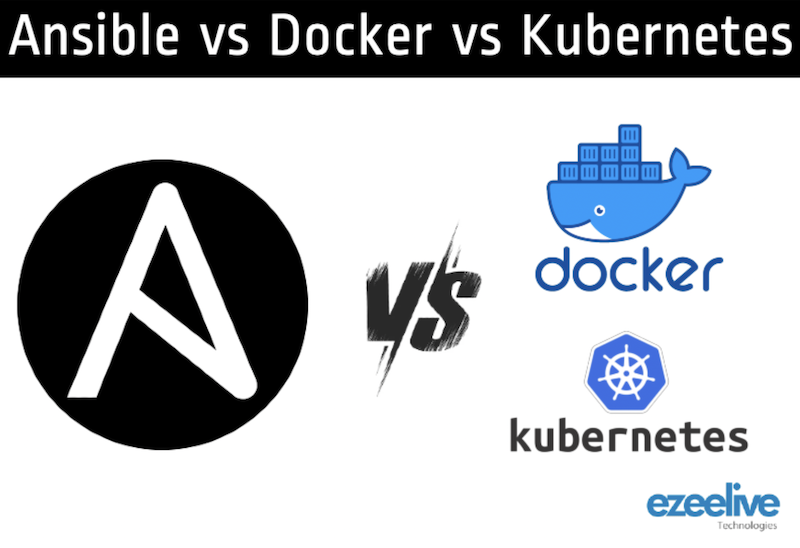
Ansible | Docker | Kubernetes | |
|---|---|---|---|
Purpose | Ansible is a configuration management tool used for automating IT infrastructure tasks such as provisioning, configuration, deployment, and orchestration.
It focuses on managing servers, networking devices, and other infrastructure components. | Docker is a containerization platform used for packaging, distributing, and running applications in lightweight, portable containers.
It allows developers to encapsulate their applications and all dependencies into a single unit, making it easy to deploy and manage applications across different environments. | Kubernetes is a container orchestration platform used for automating the deployment, scaling, and management of containerized applications.
It focuses on managing containers across a cluster of nodes. |
Scope | Ansible can be used for managing a wide range of infrastructure components, including servers, virtual machines, network devices, cloud instances, and more.
It provides a versatile platform for automating various IT operations tasks. | Docker is specifically designed for containerization and focuses on packaging and running applications inside containers.
It abstracts away the underlying infrastructure and provides a consistent environment for running applications across different platforms. | Kubernetes is specifically designed for managing containerized applications.
It abstracts away the underlying infrastructure and provides a platform-agnostic way to deploy and manage containers at scale. |
Abstraction Level | Ansible advantages is that it operates at a higher level of abstraction compared to Kubernetes. It uses playbooks written in YAML to describe the desired state of the infrastructure, focusing on tasks and configurations. | Docker operates at a lower level of abstraction, focusing on containers and the components needed to run applications.
It provides tools for building, managing, and running containers, as well as orchestrating containerized applications across a cluster of nodes. | Kubernetes operates at a lower level of abstraction, focusing on containers and microservices.
It uses declarative YAML manifests to define the desired state of applications, pods, services, and other Kubernetes objects. |
Deployment Model | Ansible typically follows a push-based deployment model, where the control node pushes configurations and tasks to the managed nodes using SSH or other protocols. | Docker containers can be deployed using various methods:
Docker Compose for defining multi-container applications.
Docker Swarm for orchestrating containers across multiple hosts.
Kubernetes for container orchestration at scale. | Kubernetes follows a declarative, self-healing deployment model.
Users define the desired state of their applications and infrastructure using YAML manifests, and Kubernetes ensures that the actual state matches the desired state. |
Integration | Ansible is a configuration management tool used for automating IT infrastructure tasks such as provisioning, configuration, deployment, and orchestration.
It focuses on managing servers, networking devices, and other infrastructure components using playbooks written in YAML. | Docker is a containerization platform used for packaging, distributing, and running applications in lightweight, portable containers.
It allows developers to encapsulate their applications and all dependencies into a single unit, making it easy to deploy and manage applications across different environments. | Kubernetes can be integrated with Ansible to automate tasks outside the scope of Kubernetes.
Such as provisioning cloud resources, configuring network devices, or performing system-level configurations. |
Some Important Links
| Topics | Link URL |
|---|---|
| How Ansible Works | //www.ansible.com/overview/how-ansible-works |
| Infrastructure Automation with Ansible | //www.ansible.com/integrations/infrastructure |
| Ansible – Wiki | //en.wikipedia.org/wiki/Ansible_(software) |
| Ansible for DevOps | //www.ansible.com/overview/devops |

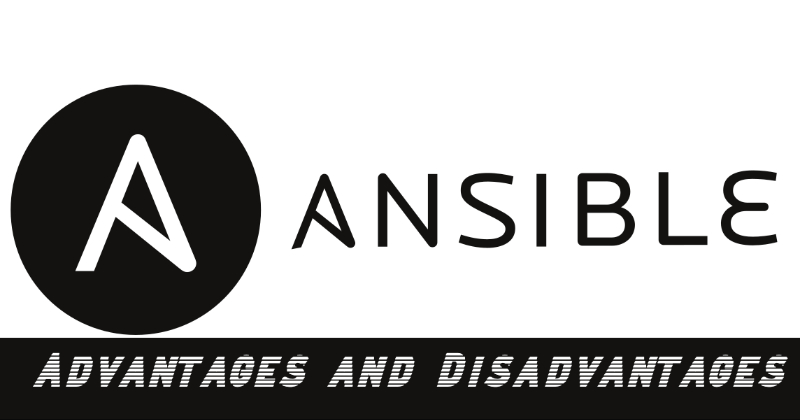

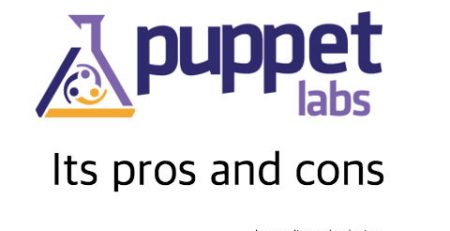
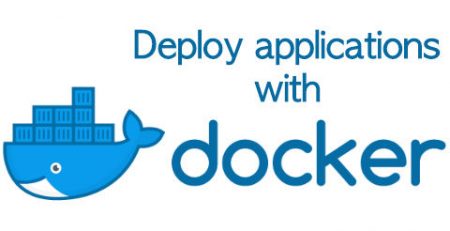

Comment (1)
It’s easy to understand, As for newbie in automation application deployment, it found really good and much-needed details for me. Thanks for sharing.